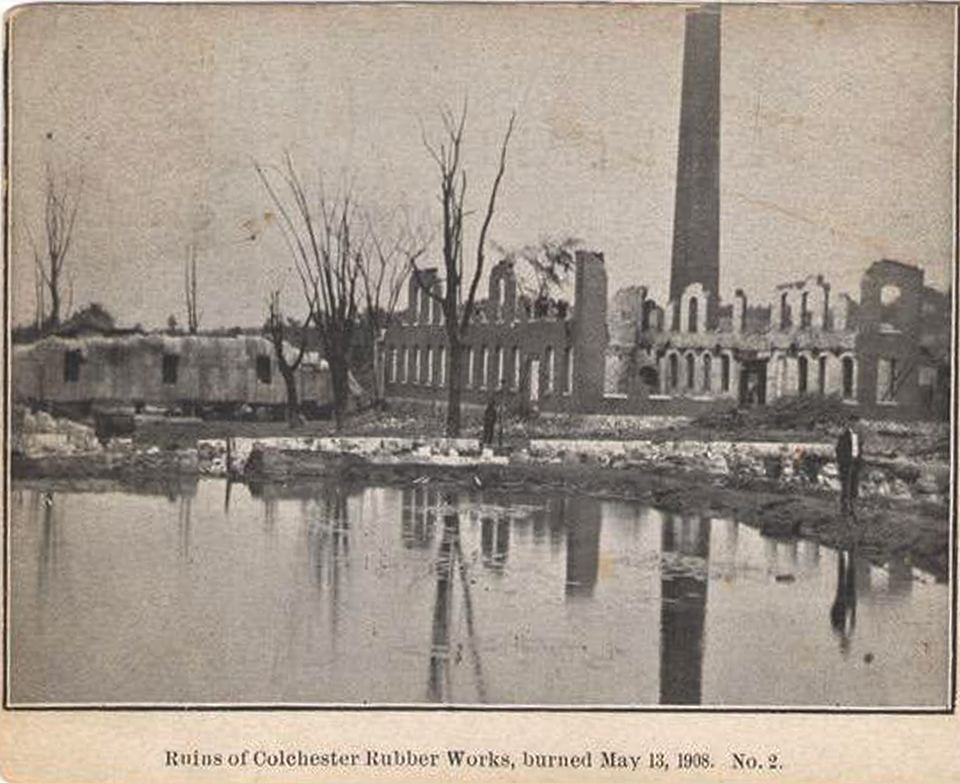The Hayward Rubber Company
The primarily agricultural town of Colchester began changing dramatically in 1847 when Nathaniel Hayward built a rubber plant on Lebanon Avenue. Hayward had owned a small rubber shoe factory in the town of Lisbon in the early 1840’s, and had begun looking for a new location in which to expand his business. Henry Burr, Hayward’s partner, preferred Colchester, since Burr’s new wife was the daughter of local businessman Ralph Isham. When Isham died in 1845, Burr bought and moved into the family home on what later became Hayward Avenue. Burr owned land on Lebanon Avenue and construction of the rubber company soon began. In 1847 The Hayward Rubber Company started producing rubber shoes and boots. Nearly 1,000 people moved into Colchester, most to work as laborers in the factory. New homes were built to house the workers, many of them on Lebanon Avenue and Windham Avenue. Because the majority of laborers were of Irish descent, this area soon became known as “Dublin”.
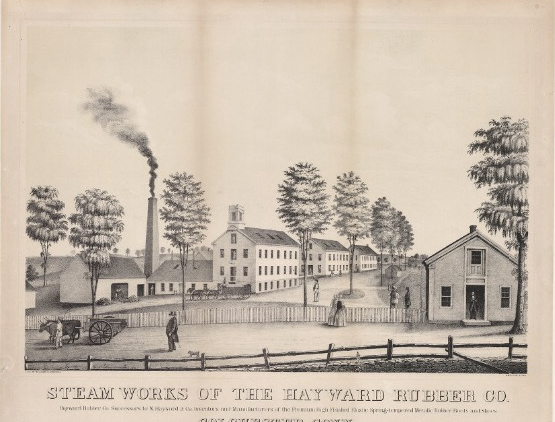
The primarily agricultural town of Colchester began changing dramatically in 1847 when Nathaniel Hayward built a rubber plant on Lebanon Avenue. Hayward had owned a small rubber shoe factory in the town of Lisbon in the early 1840’s, and had begun looking for a new location in which to expand his business. Henry Burr, Hayward’s partner, preferred Colchester, since Burr’s new wife was the daughter of local businessman Ralph Isham. When Isham died in 1845, Burr bought and moved into the family home on what later became Hayward Avenue. Burr owned land on Lebanon Avenue and construction of the rubber company soon began. In 1847 The Hayward Rubber Company started producing rubber shoes and boots. Nearly 1,000 people moved into Colchester, most to work as laborers in the factory. New homes were built to house the workers, many of them on Lebanon Avenue and Windham Avenue. Because the majority of laborers were of Irish descent, this area soon became known as “Dublin”.
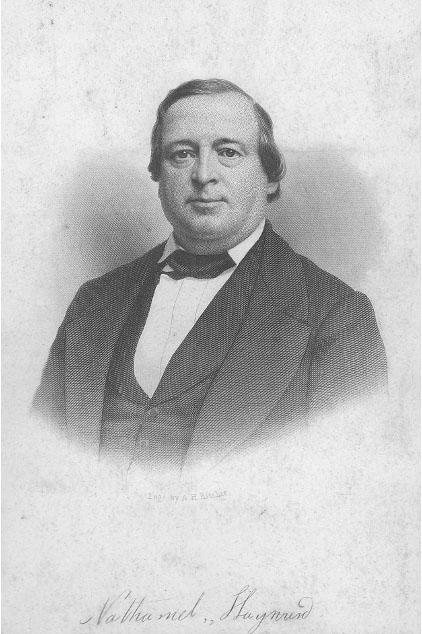
Hayward purchased the former Dudley Wright-John R. Watrous house and brought his wife, Louisa, and his four children to live there. The home soon became a frequent place for Colchester society to gather. Hayward adorned the house with Victorian details and added the Italianate carriage house and barn in the back.
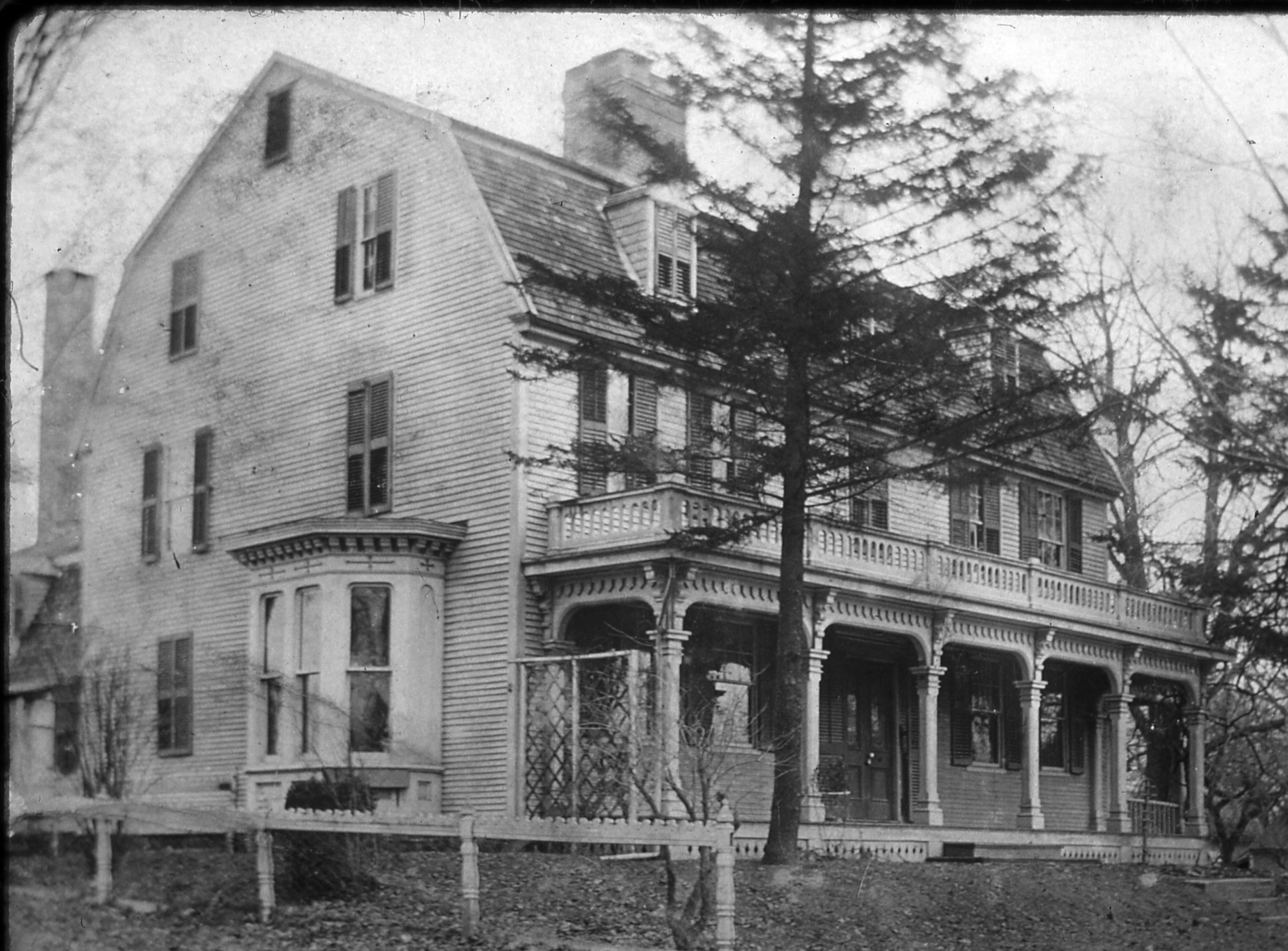
Colchester prospered and new businesses took root. Mills, farms, retail stores, a bank and manufacturing plants were opened in order to serve the growing population. The Colchester Wheel Company, located on Mill Hill adjacent to Meadow Brook, had 11 buildings and shops, which included a brick mill, a carriage shop, a sawmill, a blacksmith shop, a paint shop, dwelling units and a manager’s house. In the early 1880’s most of the buildings were destroyed when the dam on the brook collapsed.
Nathaniel Hayward was instrumental in the formation of a fire company in 1854 and was involved with the establishment of the Colchester Savings Bank. A local newspaper, the Colchester Advocate, operated in the area of Merchants Row. Hotels and saloons grew all over town while the population expanded to 2,869 by 1860 and in the next ten years reached 3,383.
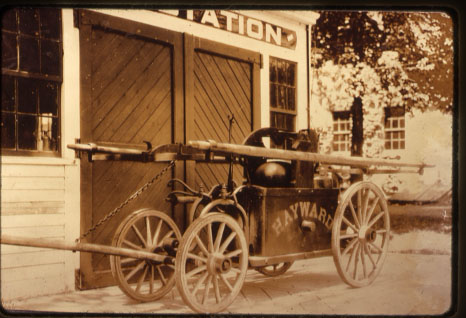
In 1865 Nathaniel Hayward died, but the rubber company and the town continued to prosper. However, in1893 The Colchester Rubber Company was sold to the U.S. Rubber Company. At Christmastime the new owners closed the plant, ostensibly, for the holiday, but the plant never reopened, and 600 workers were left without jobs. Colchester’s population rapidly declined as the jobless workers left to seek employment in other parts of the state. It was the worst of times for the town.
Mills, farms, retail stores, a bank, and manufacturing plants soon opened in order to serve the growing community. Nathaniel Hayward was instrumental in the formation of a fire company in 1854, and was involved with the establishment of the Colchester Savings Bank.
In 1865 Nathaniel Hayward died, but the rubber company and the town continued to prosper. In 1893, the Colchester Rubber Company was sold to the U.S. Rubber Company. Soon after, the company closed permanently, leaving 600 workers without jobs.
